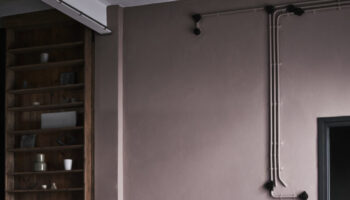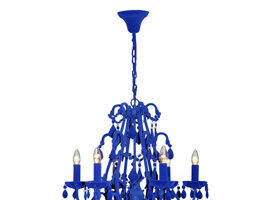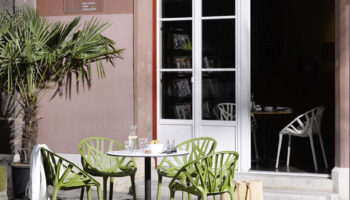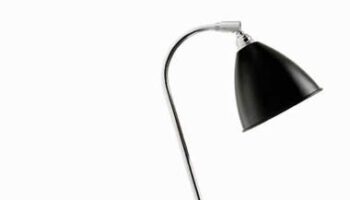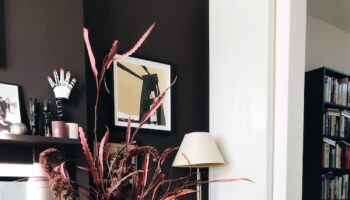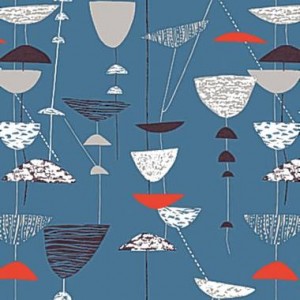
As we enter the week of the Queen’s Diamond Jubilee, Mad About The House launches a week dedicated to the Best of British Design. We begin with Lucienne Day who, along with her husband Robin, transformed British design in the post war era. He made furniture, she created stunning abstract designs for wallpapers and textiles.
Lucienne came to prominence in 1951 at the Festival of Britain. She was discovered by the fabrics director of Heals, Tom Worthington.
She said: “I had already designed a couple of things for Heal’s so I took Calyx along to them. Tom Worthington said he would produce it for me but only pay me half the fee of 20 guineas because he was certain he wouldn’t sell a yard.”
That meeting formed the basis of a collaboration that lasted 20 years and produced some 70 patterns. And in 2010 for its bicentenary, Heals created an interpretive collection of furniture and accessories using three of her most famous designs Calyx, Helix and Sunrise. Tom Worthington’s reaction has never been recorded.
Lucienne’s designs drew on the English tradition of patterns based on plant forms – grasses and flowers – but she transformed them and was influenced by the work of Kandinsky and Klee. Her textiles now seem emblematic of the post-war era and even if you have never heard of her her work seems familiar.
Calyx was originally created for the 1951 festival. Robin had been commissioned to design two pavilions featuring his furniture and Lucienne’s textiles. Her design received international praise.
Day was a passionate believer in affordable design and worked for the mass market rather than collectors. She liked the idea that people might not be able to afford a painting for the wall but could have a fabulous pair of curtains.
“I wanted the work I was doing to be seen by people and used by people,” she said. “They had been starved of interesting things for their homes in the war years.”
First published in The Independent

